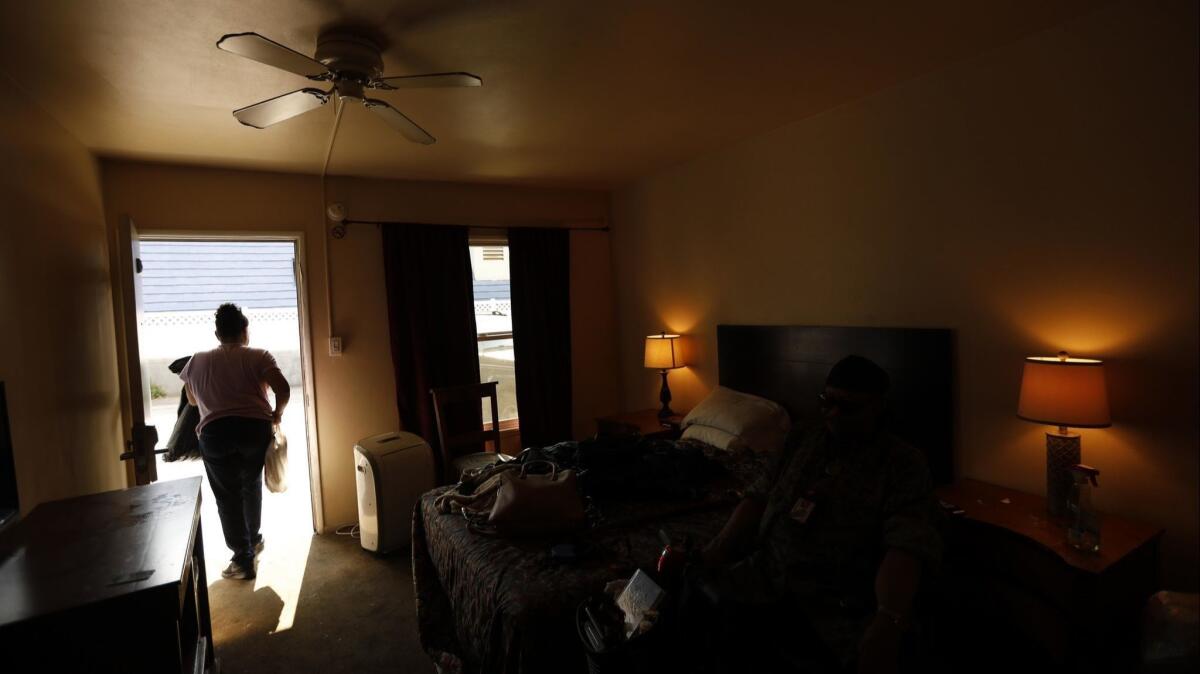Endorsement: California desperately needs affordable housing. Prop 1 will help build it. Vote yes

- Share via
The chronic housing shortage in California is not just one of the state’s biggest challenges, it is exacerbating several other misery-inducing problems in this state — such as homelessness, air pollution and increasingly costly wildfires — while also raising the cost of living and crimping economic growth. Reducing and eventually eliminating that shortage must be one of the state’s top priorities.
That’s why Proposition 1, a $4-billion bond measure on the November ballot to fund eight different programs subsidizing the construction or purchase of housing and supporting infrastructure, deserves a yes vote. It won’t end the housing crisis, but it’s an important part of the solution.
Dubbed the Veterans and Affordable Housing Bond Act, the measure is one of a flurry of somewhat uncoordinated and ad hoc efforts by the state Legislature to increase the supply of residential units in California. The name is a little misleading because only a quarter of the money — $1 billion — is earmarked for veterans; the bulk of it would go to apartments and houses for lower-income California residents.
The biggest portion of the Proposition 1 funds — $1.5 billion — would be reserved for county governments and nonprofit developers to build apartments for Californians with incomes no more than 60% of the median state income (which translates to roughly $19,000 per person or $41,000 per household). Smaller amounts would be directed to a handful of other programs related to the development or rehabilitation of higher-density, affordable housing across the state, including $300 million dedicated to housing agricultural laborers. All told, the state Legislative Analyst’s Office estimates, the measure’s subsidies for developers would help 30,000 lower-income apartment dwellers and 7,500 farmworkers.
Developers argue, persuasively, that without such subsidies, it’s just not economic to build housing units that lower-income Californians can afford.
Developers argue, persuasively, that without such subsidies, it’s just not economic to build housing units that lower-income Californians can afford, given that affordable housing costs about as much to build as market-rate housing.
One benefit of the increased state investment in affordable housing would be more federal housing aid. One study by groups that support Proposition 1 argues that every $1 in state money can yield more than $4 in federal funding and tax credits.
About a third of the bond money would be used to support home ownership, and that’s not the most efficient way to attack the housing crisis. The state could get considerably more for its housing dollars by pouring them into affordable rentals.
Most of Proposition 1’s aid for home ownership, though, would go to veterans at no direct expense to taxpayers. Since 1921, the state has issued tax-free bond 23 times to finance mortgages at below-market rates for veterans to buy homes or farms. The principal, interest and expenses are covered by the borrowers; the only indirect cost is the taxes forgone on the bonds themselves. The $1 billion from Proposition 1 is projected to support loans to 3,000 veterans.
Voters green-lit a $900 million bond issue for the “CalVet” program in 2008, just as the housing market was cratering and demand for loans was evaporating. Six years later, voters passed Proposition 41 to shift $600 million from the 2008 bonds into the construction of affordable apartments and supportive housing units for low-income veterans. Since then, the growing economy has revived demand from veterans for home mortgages, prompting CalVet to seek more funding.
Enter the Fray: First takes on the news of the minute from L.A. Times Opinion »
The proposition would also provide $450 million to state programs that help very low, low and moderate-income families acquire, build or retain their first homes. Among other things, the funding would subsidize down payments for about 15,000 home buyers
Critics of the proposal say that it wouldn’t address the state and local barriers to housing construction that caused the housing crisis in the first place. They’re right about that, but again, Proposition 1 is just one piece of the puzzle. Over the past two sessions, lawmakers have passed a slew of proposals designed to make it easier to build housing for homeless and low-income tenants, and harder for cities to deny new development on NIMBY grounds.
As we’ve observed before, the state needs to build 3.5 million homes by 2025 to satisfy pent-up demand for housing and to stabilize prices. To even get close to that number would require a building boom unlike any California has seen since the 1960s. Proposition 1 is a necessary step, even if it’s not a sufficient one.
Follow the Opinion section on Twitter @latimesopinionand Facebook
More to Read
A cure for the common opinion
Get thought-provoking perspectives with our weekly newsletter.
You may occasionally receive promotional content from the Los Angeles Times.










